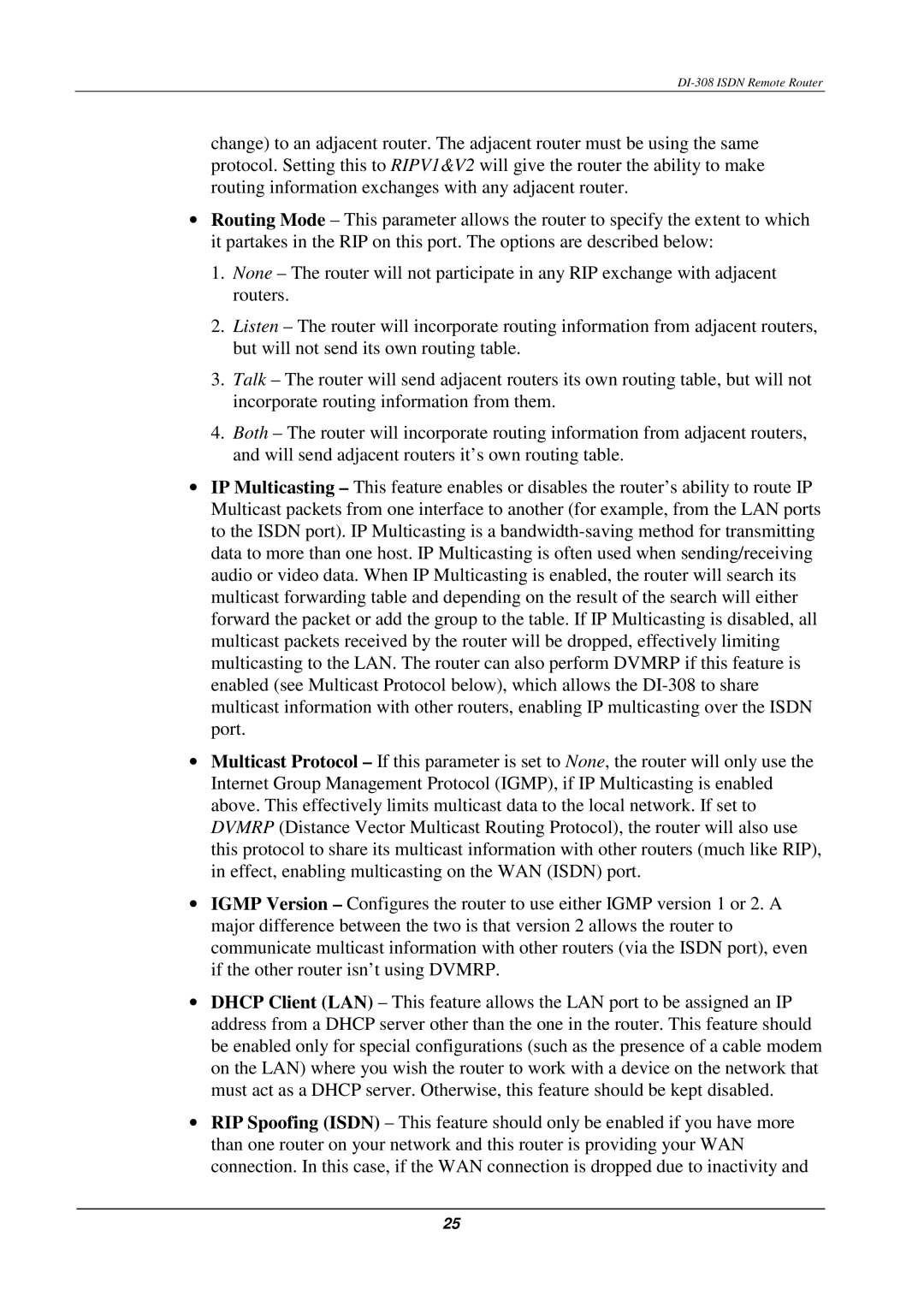
DI-308 ISDN Remote Router
change) to an adjacent router. The adjacent router must be using the same protocol. Setting this to RIPV1&V2 will give the router the ability to make routing information exchanges with any adjacent router.
•Routing Mode – This parameter allows the router to specify the extent to which it partakes in the RIP on this port. The options are described below:
1.None – The router will not participate in any RIP exchange with adjacent routers.
2.Listen – The router will incorporate routing information from adjacent routers, but will not send its own routing table.
3.Talk – The router will send adjacent routers its own routing table, but will not incorporate routing information from them.
4.Both – The router will incorporate routing information from adjacent routers, and will send adjacent routers it’s own routing table.
•IP Multicasting – This feature enables or disables the router’s ability to route IP Multicast packets from one interface to another (for example, from the LAN ports to the ISDN port). IP Multicasting is a
•Multicast Protocol – If this parameter is set to None, the router will only use the Internet Group Management Protocol (IGMP), if IP Multicasting is enabled above. This effectively limits multicast data to the local network. If set to DVMRP (Distance Vector Multicast Routing Protocol), the router will also use this protocol to share its multicast information with other routers (much like RIP), in effect, enabling multicasting on the WAN (ISDN) port.
•IGMP Version – Configures the router to use either IGMP version 1 or 2. A major difference between the two is that version 2 allows the router to communicate multicast information with other routers (via the ISDN port), even if the other router isn’t using DVMRP.
•DHCP Client (LAN) – This feature allows the LAN port to be assigned an IP address from a DHCP server other than the one in the router. This feature should be enabled only for special configurations (such as the presence of a cable modem on the LAN) where you wish the router to work with a device on the network that must act as a DHCP server. Otherwise, this feature should be kept disabled.
•RIP Spoofing (ISDN) – This feature should only be enabled if you have more than one router on your network and this router is providing your WAN connection. In this case, if the WAN connection is dropped due to inactivity and
25
